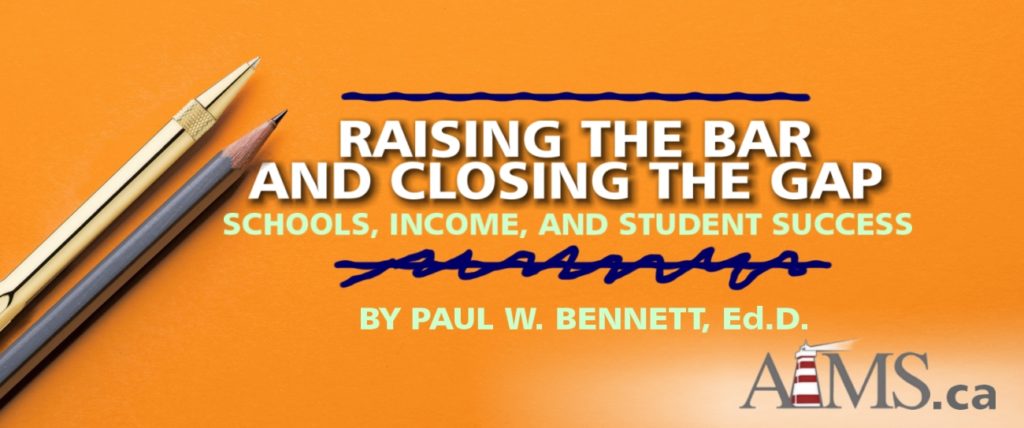
Student performance can be highly varied in school systems and differences among children and teens from different classes or groups, marked by income, ethnic, or racial disparities, are commonly termed the ‘achievement gap.’ While the school board and schools have introduced programs to improve student performance, there are still hurdles to overcome.
(Click on the interactive map to see where your postal code places you)
The latest study from AIMS Fellow Paul Bennett shows that while children in the Halifax area currently receive a better education if they happen to live in the better parts of the city, there are five practical ways to restore fairness of opportunity to the province’s education system:
1) Full disclosure of student performance data, school-by-school. As former superintendent Carole Olsen once said: “Knowing how each school is doing is the first important step in making sure resources and support reach the schools – and the students—that need them the most.” Plus, informed parents can be allies in school improvement.
2) Raise student achievement standards. Completely revamp the early reading and mathematics programs by running control trials and introducing evidence-based alternatives such as Halifax Learning’s “Spell Read” and John Mighton’s JUMP Math. Review all Grade 7 to 9 students on Individual Learning Programs (IPPs) and ensure that they are properly placed to achieve student success. Develop a student “rewards” program recognizing excellence, student and school improvement. Phase-out current student evaluation policies that undermine academic standards and inadvertently weaken student work ethic, perseverance and determination to succeed.
3) Establish education reconstruction zones. While the Priority Schools approach is a good start, effective learning support needs to take a broader, community-wide project. Engage active parents and local community groups, and mobilize local enterprise and community services to address the educational inequities.
4) Develop a local version of Pathways to Education. Rather than wait for the Toronto-based centre to approve another site, the district could adopt a local version of the community-based Pathways to Education program in Dartmouth North, the Halifax North End, North Preston, and Woodside.
5) Embrace a two-track strategy: educational excellence and equity. Develop a much broader, more comprehensive plan to advance Educational Excellence and Equity, together, rather than focusing almost exclusively on raising the achievement levels of those consistently performing below provincial standards. Improving schools involves raising the bar as well as ministering to the needs of those falling between the cracks.
Bennett used data compiled by the Halifax regional school board to compare student test scores in a benchmark year (2008-09) with those in 2015-16, the most recent year for which Bennett had data. He found that students at elementary schools in Halifax’s most affluent districts, with few exceptions, outperform all others in student achievement. By contrast, 20 regions 95 elementary schools identified in 2014 “Priority Schools” where students “consistently perform below provincial standards” in literacy and mathematics tended to be in disadvantaged neighbourhoods in identifiable low-income pockets of the Halifax region.
“Problems can go unattended because of the impregnable silos separating schools from community-based services,” noted Bennett. “Promising after tutoring programs end up having to be shoe-horned into regular school hours. Investing so heavily in staff training and resources is problematic in schools with too much staff turnover. Transient school populations make teaching a challenge and aggravate the turnover problem prevalent among teachers in struggling schools.”
Click here to read the study

Dr. Paul Bennett

